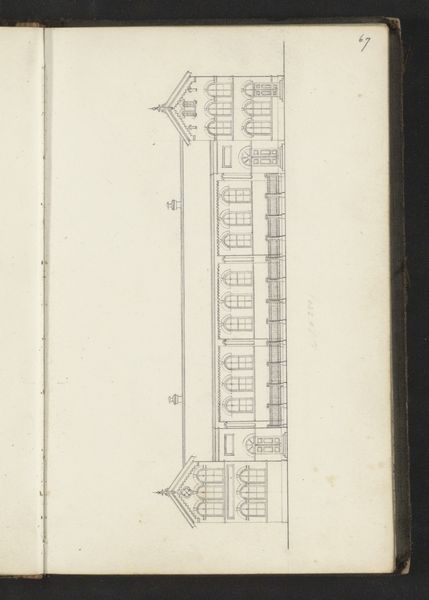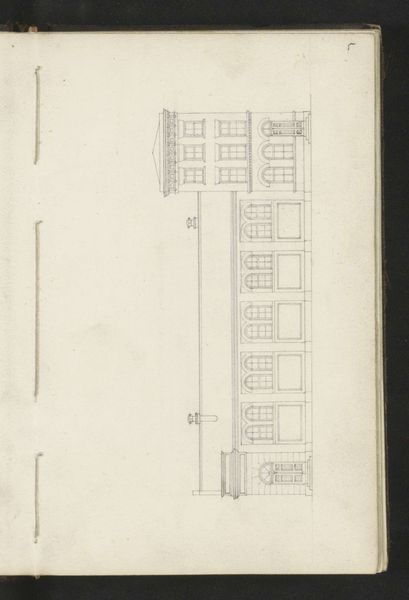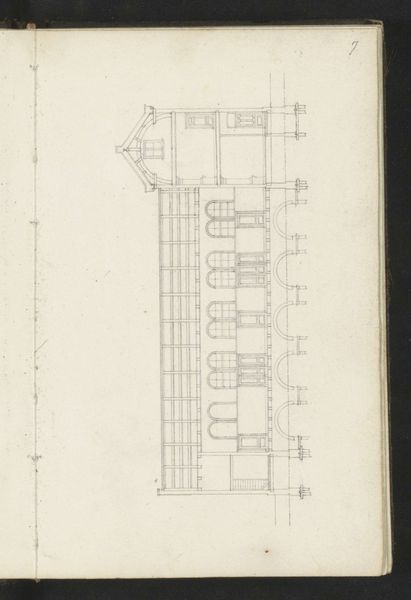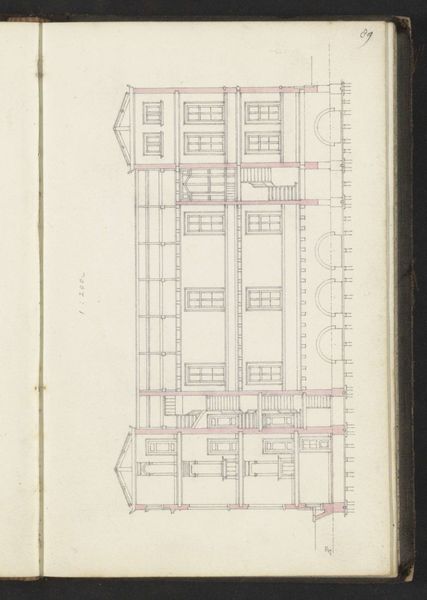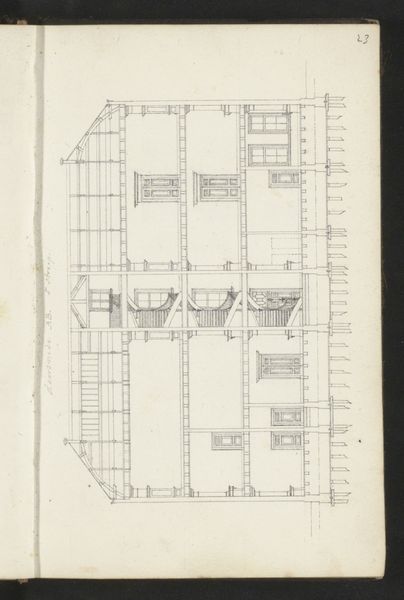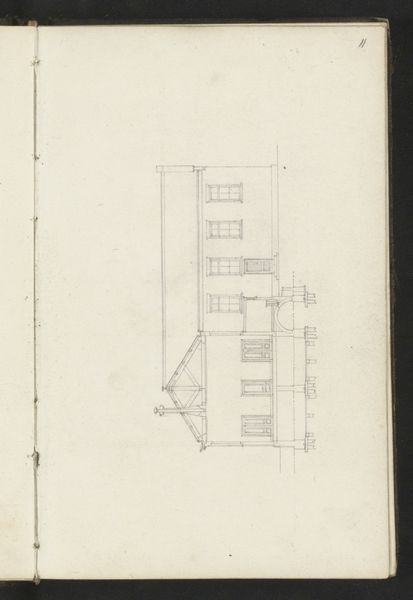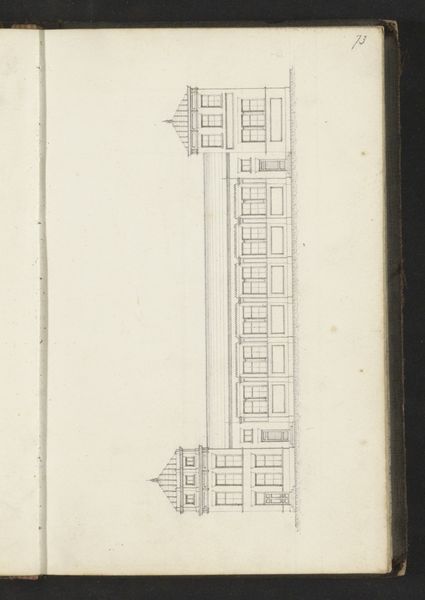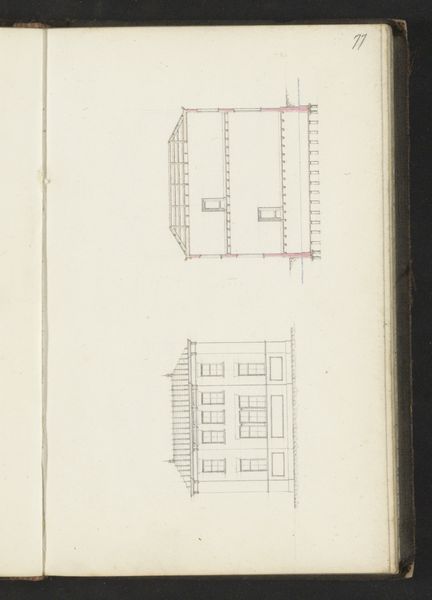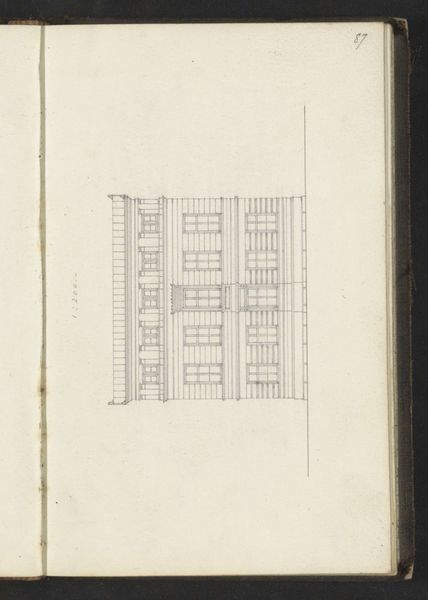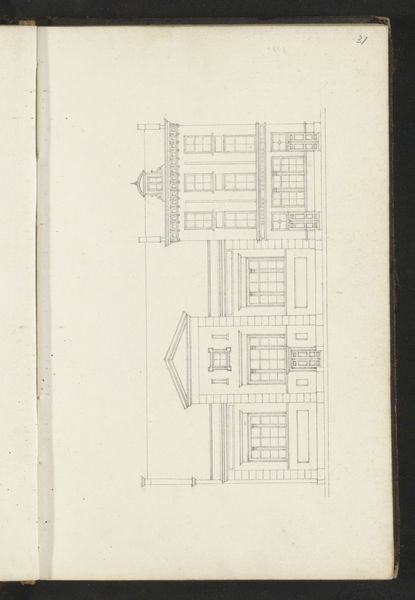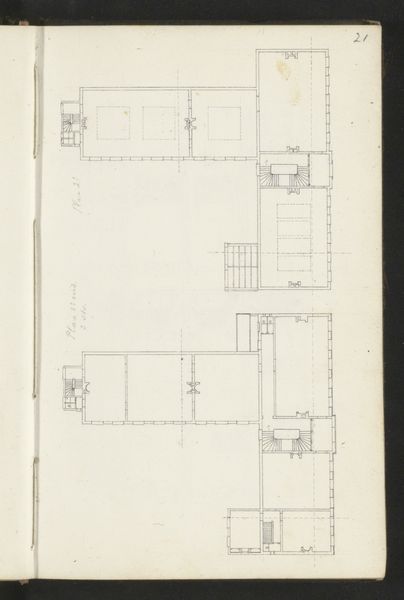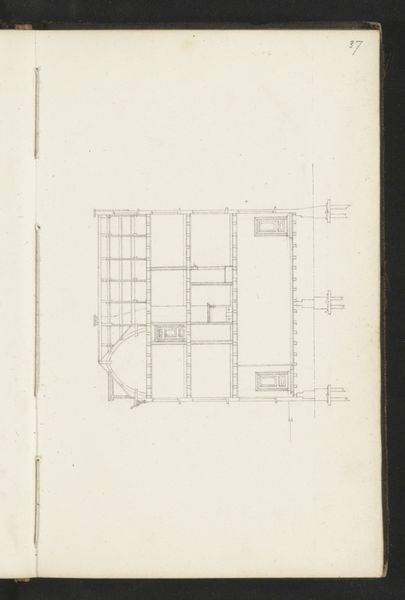
drawing, paper, pencil, architecture
#
drawing
#
paper
#
pencil
#
cityscape
#
northern-renaissance
#
architecture
#
realism
Copyright: Rijks Museum: Open Domain
Curator: The artwork before us, rendered in pencil on paper around 1864, is titled "Elevation of a Building Façade with Arched Windows" by Willem Springer Jr. Editor: My initial reaction is a sense of almost fragile precision. The stark linearity juxtaposed against the soft shading feels simultaneously architectural and dreamlike. Curator: The drawing’s meticulous attention to architectural detail reminds me of Northern Renaissance ideals, even though it's dated much later. The arches, the fenestration—they speak to a classical yearning tempered by a Dutch practicality. There is almost a sense of realism to it. Editor: Yes, and structurally, note the deliberate repetition of forms, specifically the rounded windows. The subtle variations introduce rhythm. Are these rounded windows, for instance, meant to evoke the shape of certain faces or are they purely structural, serving a specific architectural intention that transcends pure geometry? Curator: Well, round-arched windows in historical architecture symbolize, classically, Roman strength and stability. Springer might have intended a statement about the civic power this building represented, though a lot could be based on the building function as well. The arches are rhythmic as well, repeating over and over in time, a statement of duration. Editor: Indeed. Their repetitive nature emphasizes not only form, but perhaps function, alluding towards both private and public life—are those homes? Shops? Consider how different cultures use and engage with repeated patterns. And those stark lines? They act as boundaries, defining territories. Curator: You are drawing connections between built structure and social structures. The façade in itself operates as a mask; projecting outwards whatever symbolism those that commissioned it intended. Springer captured a powerful facade. Editor: Precisely! And Springer does capture it effectively. Seeing the ways in which this simple pencil drawing offers up a reflection about time, permanence, identity... Curator: Indeed. It speaks of cultural continuities as much as it shows a specific structure at a specific point in time. Thanks for this discussion. Editor: Thank you. It seems that even something as ostensibly straightforward as a building façade contains its own labyrinth of meanings.
Comments
No comments
Be the first to comment and join the conversation on the ultimate creative platform.
